 Web Monday Zurich is a meeting setup on Amazee.com to enable interaction between people in the web community around Zurich. Startups have a chance to present their ideas and get feedback, everyone has a chance to mingle and network, feed your brain and your innovation side in social atmosphere, how can you not go?
Web Monday Zurich is a meeting setup on Amazee.com to enable interaction between people in the web community around Zurich. Startups have a chance to present their ideas and get feedback, everyone has a chance to mingle and network, feed your brain and your innovation side in social atmosphere, how can you not go?
I wanted to attend my first Web Monday at the end of August, companies like MAGMAG Magazines were presenting, and being a photographer looking for new ways to present visual content, I was eager to see what was up. But that Monday I had just flown back from shooting a wedding in Rome, had picked up some sort of sickness, and took down the wrong address. So I ended up looking for Feldstrasse 113, a fictions address just different enough from Feldstrasse 133 to make me think I was going out of my mind.
Web Monday #10 was held in the Amazee office at the Technopark in Zurich (I was there before for a booster party), and my mind was sharp, so it was problem to find and attend. I could have stayed home and played with my new Octabox, but I was itching to infuse my mind with something new.
Two companies presented, GetYourGuide.com and StreamForge.
So, there’s like a thousand travel website on the net, you can book a flight, book a hotel, book a car, book a train…but what about booking “an experience?” GetYourGuide is a newly out of Beta website Startup which seeks to connect trip provides (suppliers) with people looking for travel experiences (customers). The idea is you head to the website and and quickly search through destinations or activities and quickly find a cool experience, like a city tour, bike tour, etc. I see a lot of potential for GetYourGuide, because I’ve been in a position to use it many times. During the Spring I was in San Diego and L.A. for a few weeks. In San Diego I was trying to book a kite boarding class, in L.A. I was searching for the best graffiti. I ended up buying some Bratz dolls and shooting them on the streets of the cities. So, in the end I didn’t learn to kite board, but did have a cool experience. However, I didn’t end up kite boarding because by the time I found a school, I had run out of time and had to fly back to Zurich. For a travel consumer such as myself, GetYourGuide can offer a lot of value, and I’ll use it to find a cool trip in the next city I visit.
For trip suppliers GetYourGuide is attractive, because it connects the local suppliers to the global customer directly. It includes a very nice back-end with analytics software to help suppliers see how people are visiting their trip listings. At the moment GetYourGuide is targeting popular destinations, and finding trip suppliers in those main cities. This is nice strategy, as they can bring in revenue quickly, and then expand to targeting trip suppliers in broader destinations. This is what interests me the most, because if you’re looking for a cattle driving experience in New Mexico and you live in Stuttgart, it’s not so easy to do. I also had problems in the past contacting mountain guides in Bolivia when I flew down there. I think if GetYourGuide expands into these areas and eventually targets specialty suppliers, they’ll set themselves apart from their competitors like Viator.com and have a web company offering a lot of value to their customers and suppliers. I’m looking forward to a travel experience-enhanced future.
So, when Barack Obama was giving his inauguration speech, so many people tuned in that the video feed was unavailable, the internet was broken – overloaded, users were blocked, their experience ruined. I didn’t watch the speech, but I do recall trying to watch the 2009 Leica webcast during the launch of their new cameras, the S2, X1, and M9. Their servers were overloaded and I had to read about it on a forum, how disappointed I was. How can we avoid this in the future? By using Peer-to-Peer strategies like those employed in LimeWire and previously in Napster (and now many others).
Instead of downloading the video or audio content directly from a website, parts are downloaded from other people who are downloading the same content. This removes the load from the main server, and enables people to maintain their enjoyment of the internet without overloading the system. This isn’t a new idea (in principle) it was tried (and failed) in the past. But StreamForge is using technology developed from the latest research at ETH Zurich, and like many technologies, the subsequent try is often far better than the first attempt.
Like (as far as I know) all Peer-to-Peer sharing platforms, StreamForge does require that their software be downloaded and installed by users, otherwise they wouldn’t be able to upload data and remove the load on the main server. But this presents a potential problem, because many consumers are wary of installing random programs which are connected to the internet, even though it may not be any different than using a webpage. Also, this is a technology which the main server companies need to adopt and trust in. If these two barriers can be overcome, then StreamForge has a bright future. There are other examples of companies with similar problems. Flash was introduced something like many, many years ago, but it’s really only in the last few years that it’s gained wide acceptance, and nearly every web browser has it installed.
Brass Tacs
Web Monday #10 rocked, I love seeing how different technologies develop and how new companies launch and present themselves. It’s very inspiring, and makes you think in new ways (at least, it works for me). I had an excellent time at Web Monday #10, I’m sad I missed #9, and am looking forward to #11, which will include presentations by Prof. Manfred Vogel from FHNW, Joaquin Cuenca Abela from Panoramio and Andreas Hoffmann from UBS (there’s a contest in the works).
The next Web Monday is coming up on Nov. 30th, location to be announced. Check out the Web Monday Zurich magazine on Amazee for further details. Also, STARTWERK.CH was a German write-up on Web Monday #10.




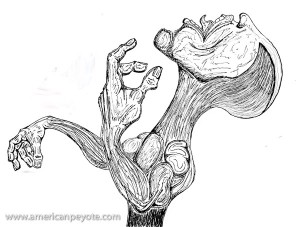
 By far the best drawing I produced at MSU was started during a Chemcical Engineering course on Colloids. I wanted to learn about colloids science to better understand the application of 3D printing and rapid prototyping technology to the manufacture of 3D hydroxyapatite bone scaffolds. The class started out fine but the lecture consisted of Dr. Ofoli runing through a black and white PowerPoint presentation for about an hour and a half during the evening. Although the slides were prepared before class, he wouldn’t let us download them for class to takes notes with, “because then students wouldn’t come to class.” So, basically I didn’t learn anything during class, all I was doing was trying to copy everything from the presentation before he flipped to a new slide. The woman who sat behind me would draw Manga all night, and one night my brain had had enough and drew a giant screaming head inspired by Pink Floyd: The Wall.
By far the best drawing I produced at MSU was started during a Chemcical Engineering course on Colloids. I wanted to learn about colloids science to better understand the application of 3D printing and rapid prototyping technology to the manufacture of 3D hydroxyapatite bone scaffolds. The class started out fine but the lecture consisted of Dr. Ofoli runing through a black and white PowerPoint presentation for about an hour and a half during the evening. Although the slides were prepared before class, he wouldn’t let us download them for class to takes notes with, “because then students wouldn’t come to class.” So, basically I didn’t learn anything during class, all I was doing was trying to copy everything from the presentation before he flipped to a new slide. The woman who sat behind me would draw Manga all night, and one night my brain had had enough and drew a giant screaming head inspired by Pink Floyd: The Wall. To finish the screaming head sketch I scanned it and started some basic work in Photoshop. Using my Wacom tablet I erased part of the head and then added an arm – drawn later on a separate night. I didn’t like the original shape of the head so I re-drew the head with my Wacom and then made the head more alien-like, with oriented pen strokes. In the end, after writing Revolt from the Singles Table, I realized it was the perfect graphic to place opposite Chapter IV.
To finish the screaming head sketch I scanned it and started some basic work in Photoshop. Using my Wacom tablet I erased part of the head and then added an arm – drawn later on a separate night. I didn’t like the original shape of the head so I re-drew the head with my Wacom and then made the head more alien-like, with oriented pen strokes. In the end, after writing Revolt from the Singles Table, I realized it was the perfect graphic to place opposite Chapter IV. Photoshop is one of the coolest, most influential programs I’ve used in my computer life. Before I had a digital camera I had a Mac Cube, that beautifully designed simplistic computer which has never been equaled for elegance and class. It was a good time, I put contact paper on my walls and wrote on them whenever an idea took hold. Poetry, philosophy, thoughts on existence, everything that came into my head. The problem with drawing on static walls is that the ideas and pictures become locked in a certain place, a specific arrangement. Photoshop freed me from that. As soon as I got Photoshop I knew it would be pointless to use it with a mouse and picked up a Wacom Graphire tablet for $80 or something. From there I started experimenting with combining sketches and doing the color digitally.
Photoshop is one of the coolest, most influential programs I’ve used in my computer life. Before I had a digital camera I had a Mac Cube, that beautifully designed simplistic computer which has never been equaled for elegance and class. It was a good time, I put contact paper on my walls and wrote on them whenever an idea took hold. Poetry, philosophy, thoughts on existence, everything that came into my head. The problem with drawing on static walls is that the ideas and pictures become locked in a certain place, a specific arrangement. Photoshop freed me from that. As soon as I got Photoshop I knew it would be pointless to use it with a mouse and picked up a Wacom Graphire tablet for $80 or something. From there I started experimenting with combining sketches and doing the color digitally.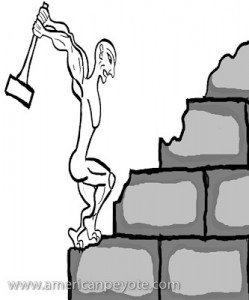 I called this first thing “Perspective” I guess because, well, I have no idea. I was introduced to Pink Floyd: The Wall during this time, so it made sense to include a brick type structure, which was being demolished by small worker guys with devil legs and no hair on their heads. I also like the look of Marvel and Magneto from the X-men, so I added something with muscles and a cool Spartan helmet. It started as a few separate hand sketches which were digitized, and then colored in Photoshop.
I called this first thing “Perspective” I guess because, well, I have no idea. I was introduced to Pink Floyd: The Wall during this time, so it made sense to include a brick type structure, which was being demolished by small worker guys with devil legs and no hair on their heads. I also like the look of Marvel and Magneto from the X-men, so I added something with muscles and a cool Spartan helmet. It started as a few separate hand sketches which were digitized, and then colored in Photoshop. It’s been cool to look at what I do now with a sweet camera like the
It’s been cool to look at what I do now with a sweet camera like the 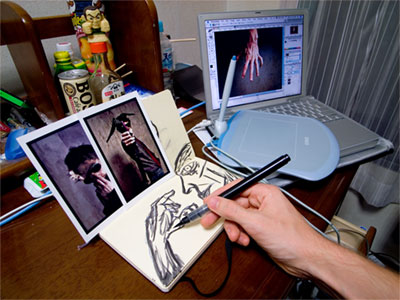

 For the back cover I stayed with a bit of 70’s retro styling and layered colored rectangles over one another with a solid black background. The American Peyote logo is added with Gonzo sitting prominently there as well. It sort of makes me think of a rainbow tunnel, like the one I used to walk through at the Detroit Institute of Arts when I visited with my mom. It also reminds me a bit of A Clockwork Orange and the visuals from the movie. Strange how all these things get mixed up in the head.
For the back cover I stayed with a bit of 70’s retro styling and layered colored rectangles over one another with a solid black background. The American Peyote logo is added with Gonzo sitting prominently there as well. It sort of makes me think of a rainbow tunnel, like the one I used to walk through at the Detroit Institute of Arts when I visited with my mom. It also reminds me a bit of A Clockwork Orange and the visuals from the movie. Strange how all these things get mixed up in the head.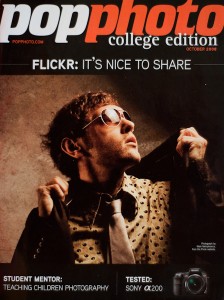 If you spend too much time reading about Web 2.0, it’s easy to get confused with the transmission of creative goods and hopeful returns in terms of money in the internet economy. If you read Wikinomics and practice your life in a Web 2.0 way, then nearly anything you produce should be given away for free. If I produce a photo for An American Peyote Scribble article and post it to Flickr, then I’m part of the philosophical web photography industry where information exchange is the medium (as opposed to hard goods). An internet publisher writes an article, posts a photo, and thereby produces a commodity (say a digital image or story) which is consumed by a consumer (random person on the web – you, the person reading this blog article).
If you spend too much time reading about Web 2.0, it’s easy to get confused with the transmission of creative goods and hopeful returns in terms of money in the internet economy. If you read Wikinomics and practice your life in a Web 2.0 way, then nearly anything you produce should be given away for free. If I produce a photo for An American Peyote Scribble article and post it to Flickr, then I’m part of the philosophical web photography industry where information exchange is the medium (as opposed to hard goods). An internet publisher writes an article, posts a photo, and thereby produces a commodity (say a digital image or story) which is consumed by a consumer (random person on the web – you, the person reading this blog article).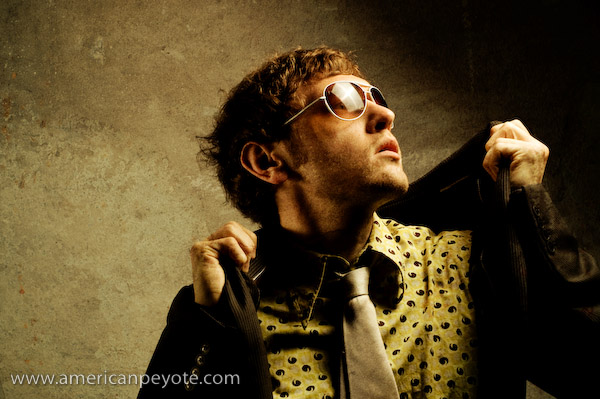
 Environment plays a huge roll in creativity and creation. Physically this happens inside a relative thing we call “space.” Call it a room, a studio, your office, a play-pen, a workshop, a bathroom, baby crib, whatever – the place you work and where you do your creative stuff. It’s where you do your photography, Photoshop, writing, painting, videos, finger painting, claymation, whatever. The point is you have to have somewhere to work and create cool stuff, and the design of that space, of that environment will greatly influence how well you can translate the vision in your head into a “creation.” So how does one design an effective “creative space?”
Environment plays a huge roll in creativity and creation. Physically this happens inside a relative thing we call “space.” Call it a room, a studio, your office, a play-pen, a workshop, a bathroom, baby crib, whatever – the place you work and where you do your creative stuff. It’s where you do your photography, Photoshop, writing, painting, videos, finger painting, claymation, whatever. The point is you have to have somewhere to work and create cool stuff, and the design of that space, of that environment will greatly influence how well you can translate the vision in your head into a “creation.” So how does one design an effective “creative space?”
 My Creative Space Design
My Creative Space Design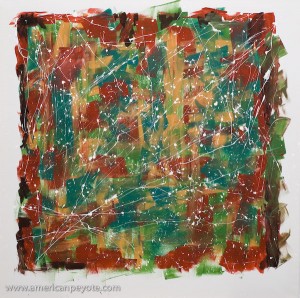
 Free the Mind – Reduce Flexible Clutter
Free the Mind – Reduce Flexible Clutter It’s Not Rocket Science
It’s Not Rocket Science
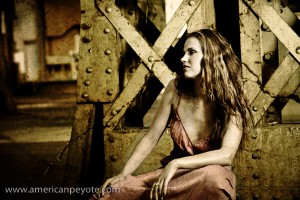
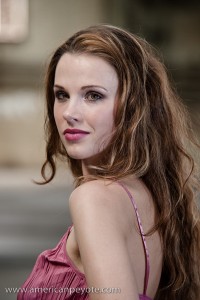
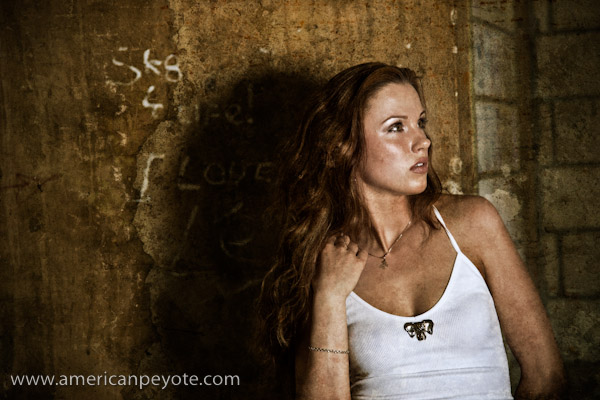

 Form-fitted and a Fox Head
Form-fitted and a Fox Head
 Classic Urban Cowgirl
Classic Urban Cowgirl





 Business Suit
Business Suit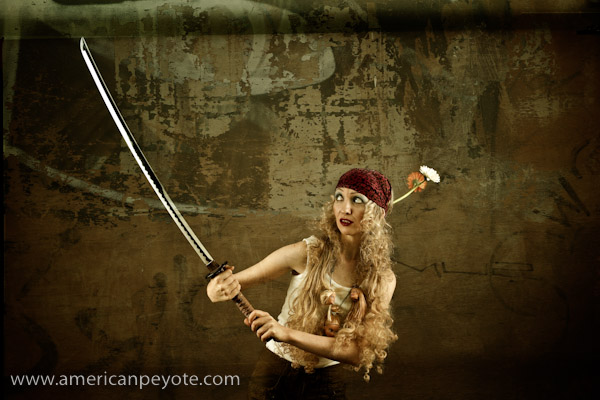
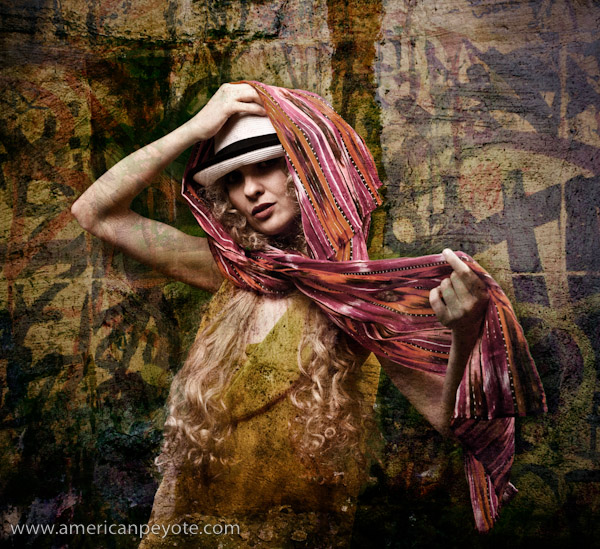



 The A900 in the Studio
The A900 in the Studio